In this guest blog, Daisy Fancourt, Research Fellow at the Centre for Performance Science, explains what can be achieved when evidence meets magic to help children with hemiplegia. Join in the conversation on Twitter with @breatheahr @daisy_fancourt and @CochraneUK
Page last checked 4 April 2023
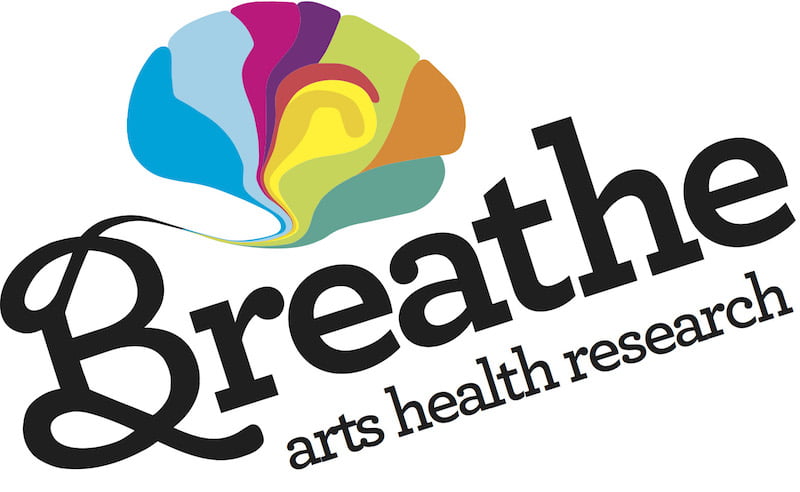
What is hemiplegia?
Childhood hemiplegia is a unilateral motor impairment, either present at birth as a cerebral palsy or acquired later in childhood, such as through brain injury. Although not as widely talked about, hemiplegia has the same incidenceThe number of new occurrences of something in a population over a particular period of time, e.g. the number of cases of a disease in a country over one year. rateThe speed or frequency of occurrence of an event, usually expressed with respect to time. For instance, a mortality rate might be the number of deaths per year, per 100,000 people. as Down syndrome, and for 1 in 2 children this is paired with an additional diagnosis, such as epilepsy, visual impairment or speech problem alongside challenges such as learning difficulties and behavioural or emotional issues.
Children with hemiplegia have particular difficulty manipulating objects and performing actions needed for independence in many daily activities. However, as discussed in Danny’s blog, selecting an effective treatmentSomething done with the aim of improving health or relieving suffering. For example, medicines, surgery, psychological and physical therapies, diet and exercise changes. from the myriad of options researched can be challenging. Treatments studied include invasive interventions (such as splinting, casting, Botulinum Toxin A injections and surgery) and task-focused interventions (such as constraint-induced movement therapy). But as with many research studies assessing treatments, there are both strengths and limitations to many of these approaches, and within the UK, for example, they are also not all available within the national healthcare system
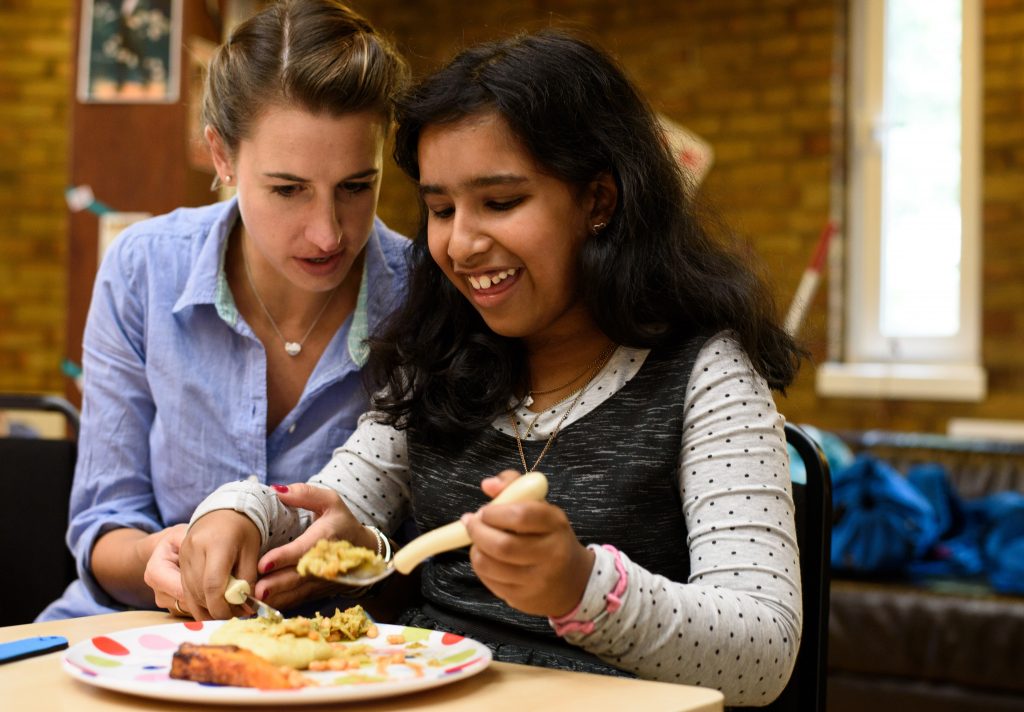
©Richard Eaton
The role of magic
The team behind Breathe Arts Health Research became aware of this difficulty in sign-posting parents to effective interventions for hemiplegia in 2008, and set about exploring additional treatment options that could benefit this group of young people. A not-for-profit community-interest company that span out of Guy’s and St Thomas’ Charity in London, Breathe delivers pioneering and award-winning healthcare programmes which combine creativity and new ideas with scientific research to produce therapeutic projects aimed at improving the health and wellbeing of individuals and the community.
With the aim of transforming hemiplegia rehabilitation, the team at Breathe worked with occupational therapists at the Evelina Children’s Hospital in London. A comprehensive review of literature on treatment models revealed one that was especially promising: Hand-Arm Bimanual Intensive Therapy (HABIT). HABIT was a modification of previous task-focused interventions but was based on the premise that an intensive 60-120 hours of therapeutic input over a short timespan of just 12 days could deliver clear clinical improvements in hand movement and function.4 Bimanual therapies (which include HABIT) received a ‘green light’ reflecting strong supporting evidence in a systematic reviewIn systematic reviews we search for and summarize studies that answer a specific research question (e.g. is paracetamol effective and safe for treating back pain?). The studies are identified, assessed, and summarized by using a systematic and predefined approach. They inform recommendations for healthcare and research. and meta-analysisThe use of statistical techniques in a systematic review to combine the results of included studies. Sometimes misused as a synonym for systematic reviews, where the review includes a meta-analysis. as well as a recommendation from NICE (2012).5,6 However, HABIT had a challenge: engaging a child’s attention for so many intensive hours could be difficult.
Consequently, the team decided to see whether adding a creative approach could turn the well-researched and effective HABIT programme into an even more engaging intervention for young children. Children attending the Breathe Magic Intensive Therapy Programme receive 60 hours of 1-to-1 intensive therapy delivered in groups of 8-12 children over just 12 days followed by 3-hour monthly top-up workshops for 6 months, which complies with the 60-120 hours of therapeutic input required in HABIT programmes. However, partnering with magicians from the Magic Circle, Breathe and the occupational therapists have worked to turn every exercise into a magic trick, so that children have a clear incentive to carry out the exercises and the goal of mastering the trick to aim for. The magical theme is further encouraged through live demonstrations of the tricks from Magic Circle magicians, magical play and costume-making sessions (simultaneously incorporating more bimanual exercises) and a performance opportunity for all children who take part at the end of the intensive therapy programme to show off their magic tricks and enhanced hand function to their families.
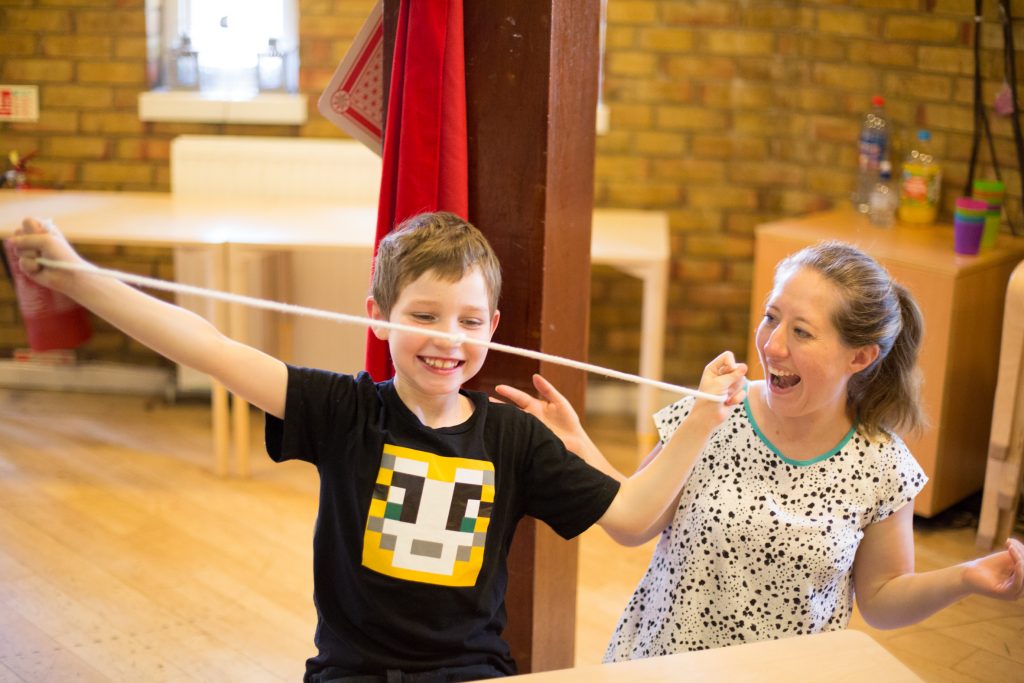
Researching Magic
Of course, although the programme follows the well-researched HABIT protocolThe plan or set of steps to be followed in a study. A protocol for a systematic review should describe the rationale for the review, the objectives, and the methods that will be used to locate, select, and critically appraise studies, and to collect and analyse data from the included studies. The protocols for Cochrane Reviews are available in the Cochrane Library., a key question is does the addition of Magic enhance the efficacyThe extent to which an intervention (for example a drug, surgery, or exercise), produces a beneficial result under ideal conditions. of HABIT or somehow dilute it? To answer this question, the team at Breathe have undertaken several years of clinical studies into the programme in partnership with Guy’s and St Thomas’ NHS Foundation Trust, Lambeth and Southwark Primacy Care Trusts, King’s College London, Oxford Brookes University, Columbia University NY, Tel Aviv University IL and Radboud University NL. The research, published in peer-reviewed journals has shown impressive results, including:
- Significant improvements in spontaneous use and performance of the affected hand (AHA)1
- Significant improvements in the independence of bimanual activities (CHEQ)1
- Improvements of over 2 minutes in grasp and release of items (JTTHF)1
- Significant increases of over 26% in the level of activation in the affected hemisphere within the brain2,3
- Increased white matter integrity in the brain in around half of the participants2,
Notes: AHA: Assisting Hand Assessment; CHEQ: Children’s Hand Experience Questionnaire; JTTF: Jebsen-Taylor Test of Hand Function
In addition, there have been reported improvements in psychological wellbeing, communication skills, self-esteem and parent-child relationships, suggesting that the programme does not just have manual benefits but also supports the mental health and social support networks of the young people. Given that a high proportion of children with hemiplegia have psychosocial comorbidities, the implications of this potential dual manual-psychosocial benefit should not be overlooked. (For an example of these benefits, see Ben’s story below.)
However, much remains to be researched in order to confirm the results seen and help us understand the anecdotal psychological benefits in more detail. There are some acknowledged limitations in the research published on the programme, including relatively small sample sizes.
There are also a number of questions that are raised that we’re currently seeking answers for: are these manual improvements consistently replicated across all ages and levels of ability? Moving beyond mere anecdote, is there statistical evidence for psychosocial improvements for children and their families from taking part in the programme? How do these potential psychosocial improvements and manual improvements interact? And is it possible to predict which children are likely to benefit the most based on baseline dataData is the information collected through research. so that the programme can be targeted as effectively as possible?
Breathe is also committed to exploring whether modifications and improvements on the current design of the programme lead to even better results. As further research takes place into related programmes such as HABIT, results will be able to inform the continued development of the Breathe Magic programme. However, as well as using external data, Breathe is also taking a proactive approach, recently launching a new 3-year research project that will both replicate and expand on previous findings, providing an even richer body of evidence for the programme.
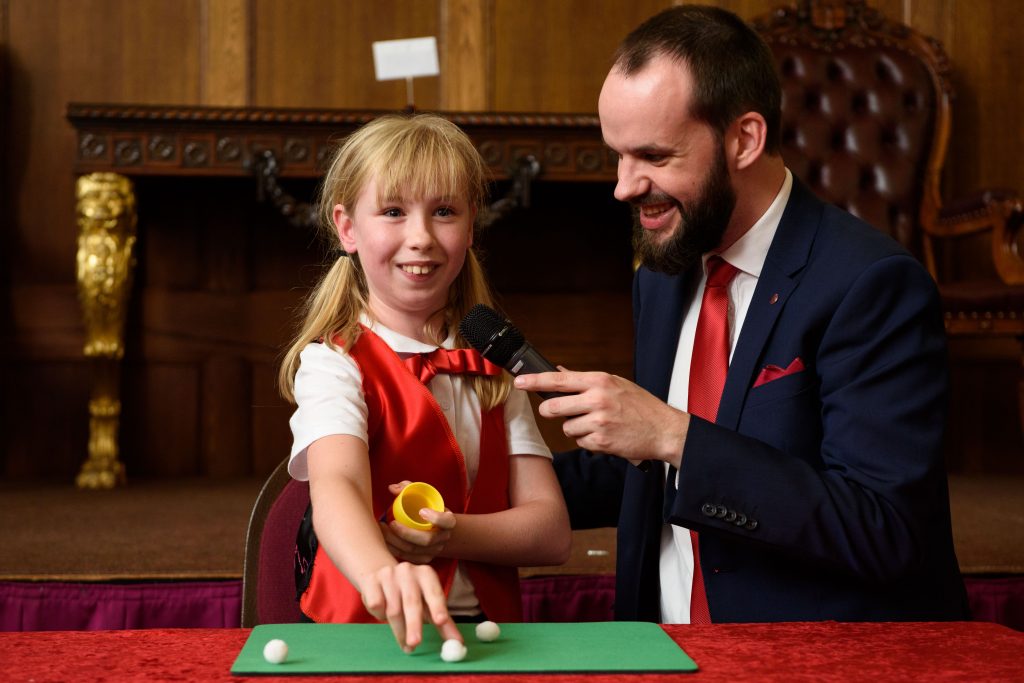
©Richard Eaton
Accessing Magic
Perhaps given the eye-catching topic of magic, this research has received much attention in the media and won a number of awards from the UK’s National Health Service (NHS), charities and social enterprises, most recently receiving the UK NHS England Innovation Challenge Prize for Rehabilitation 2016. Professor Tony Young, National Clinical Director for Innovation at NHS England said about the programme:
“NHS England are delighted to have selected Breathe Magic for the NHS Innovation Challenge Prize for rehabilitation. Their results speak for themselves and they are making a real difference to the lives of the young people they treat, through their holistic and evidence-based approach to care.”
The programme is also being commissioned and delivered in the UK within the NHS with consistently positive feedback. Secretary of State for Health Jeremy Hunt said about the programme:
“Breathe Magic is a prime example of developing new approaches to healthcare which harness the therapeutic benefits of the arts and creativity. Breathe has shown through clinical research of their Breathe Magic Camps that there is a demonstrable clinical and cost benefit to the NHS.”
Decisions about which treatment are best for each patient should of course be made with that patient’s family and taking into account personal circumstances and conditions. However, where task-focused interventions are being considered, Breathe Arts Health Research has demonstrated that a magical approach can be an effective (and fun) treatment to be added to the list of available options for children. Breathe is currently working with partners both within the UK and abroad to make this treatment more widely available. For more information, please visit http://breatheahr.org or contact magic@breatheahr.org
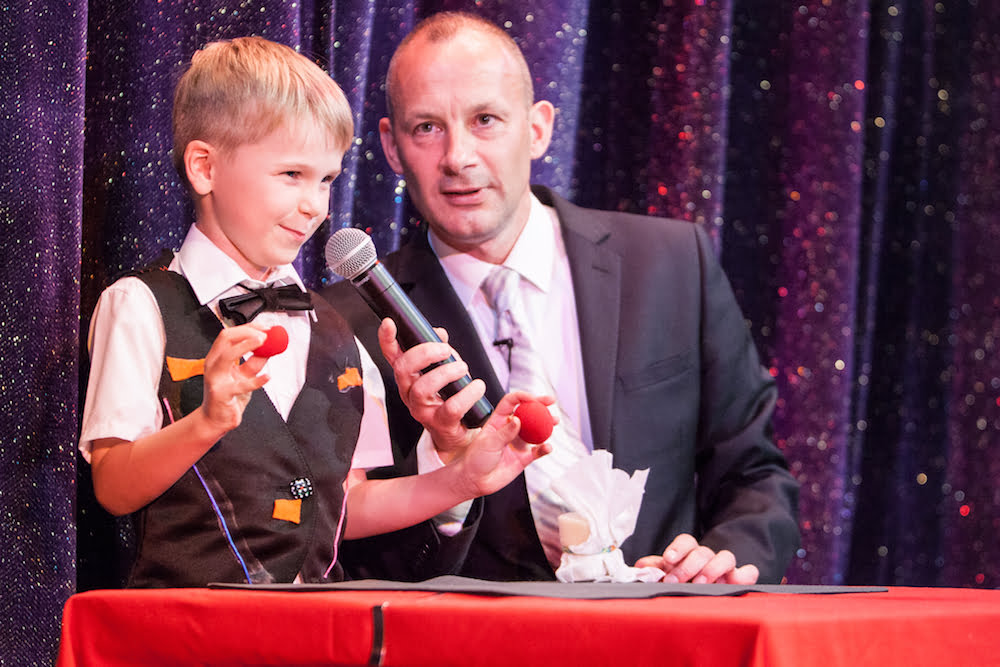
Ben’s Story
Ben has right-sided hemiplegia which affects the movement in his hand and arm, but in his particular case, it is predominantly the thumb that is most affected. His condition is the result of a brain injury at birth and means he finds it challenging to get dressed, eat, write and play certain games and instruments. Ben attended the Breathe Magic Intensive Therapy Foundation Programme, in 2014 aged seven. To begin with he was quite worried about going somewhere new, but ended up having had a great time and soon bonded with one of the older Breathe Magic Mentors. According to his mother Sharon, he practiced the tricks with gusto every evening after camp and his constant smiles both at camp and performing at home showed how much fun he was having.
Before attending the programme Ben wore a splint on his right hand. As a result of learning the magic tricks the movement in his right hand improved rapidly and he was soon tackling everyday tasks that he had previously found too difficult. Before the camp, Ben said that he wanted to be able to put on his cycle helmet by himself by the end of the two weeks. He achieved this on the second day (!) – and was even able to take it off by releasing the clasp. Over the course of the camp his confidence rocketed, which in turn improved his self-esteem at school. Since the camp Ben has continued to astound his parents with newfound skills, such as buttoning up his shirt (without their supervision) and helping to feed the cat.
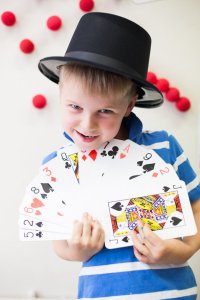
Mum Sharon said,
“I wonder if you can imagine how proud I am of Ben? It leaves me quite speechless. Only two weeks before magic camp Ben was crying with his teacher because he couldn’t join in with the rest of the children when they were doing assembly. That made me feel really sad… and Ben too. But look at him now, doing magic in front of 500 people! It amazes me! At age 7 Ben arrived at camp with his hand still fisted, then after three days of this intensive therapy the thumb started to move to the side, and I really did see that! Then of course today he was able to open his hand right out, and that is the magic.”
In 2016 Ben joined the Breathe team at the first Arts-in-Health Conference & Showcase at London’s Royal Festival Hall, in front of an audience of 500 which included the Secretary of State for Health and chairpersons from NHS England and the Arts Council. He astonished everyone (including his parents and our team) with how confidently he performed his magic in front of this huge audience!
Photo credits: ©Breathe Arts Health Research
Declaration of interest:
Daisy Fancourt reports personal salary from Breathe Arts Health Research during the writing of the blog: she works for Breathe Arts Health Research 1 day per week. Breathe organises the Intensive Therapy Programme discussed in the blog.
References can be found here.

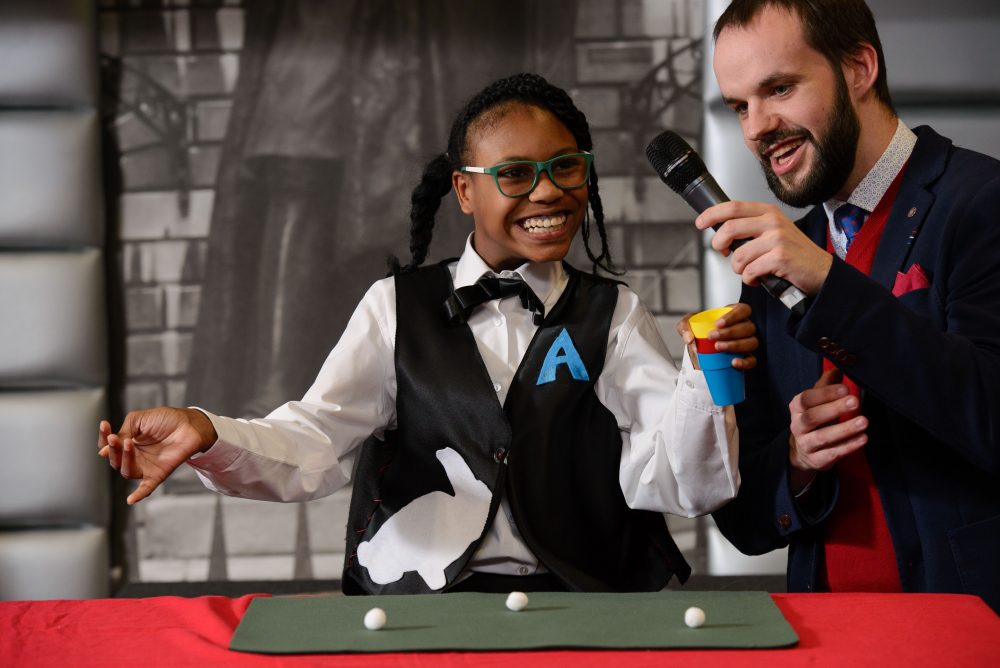

my granddaughter IS A HEMI/ FROM BIRTH/
SHE IS NOW 8 YEARS OLD AND HAS BECOME VERY ANGREY AND AGRESSIVE . EVERY COUPLE OF HOURS SHE IS HAVING A MELT
DOWN AND IT TAKES A VERY LONG TME TO CALM HER DOWN.
SHE BECOME HISTERICAL. I THINK SHE IS ALSO DEPRESSED.
IS THERE A MEDICATION THAT CAN HELP THIS YOUNG CHILD./
SHE DOES HAVE PHYSIO AND SEE HER PSYCHOLOGIST BUT , ONLY ONCE A WEEK.
THANK YOU
JACQUI
Keep inspiring us. LLL thanks on your sweat!